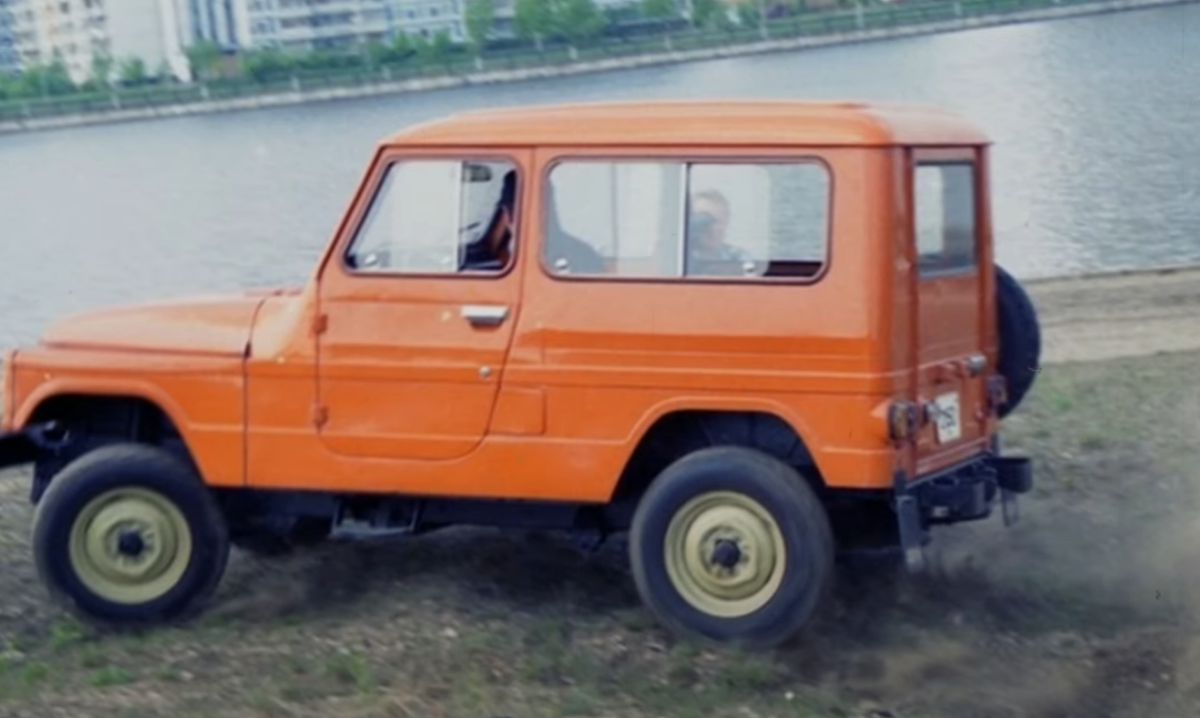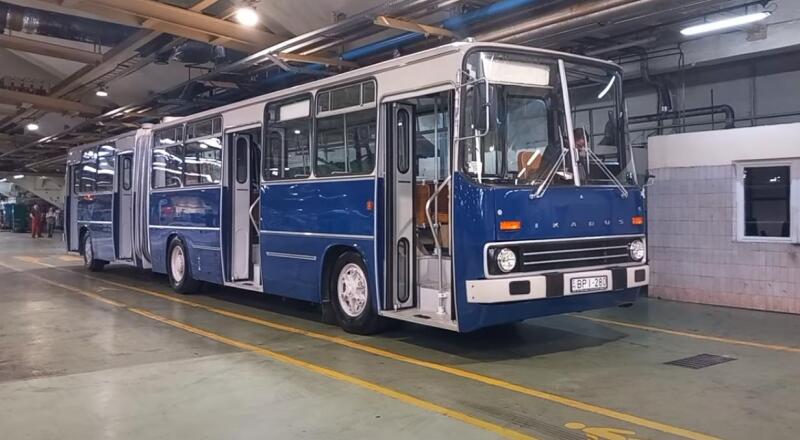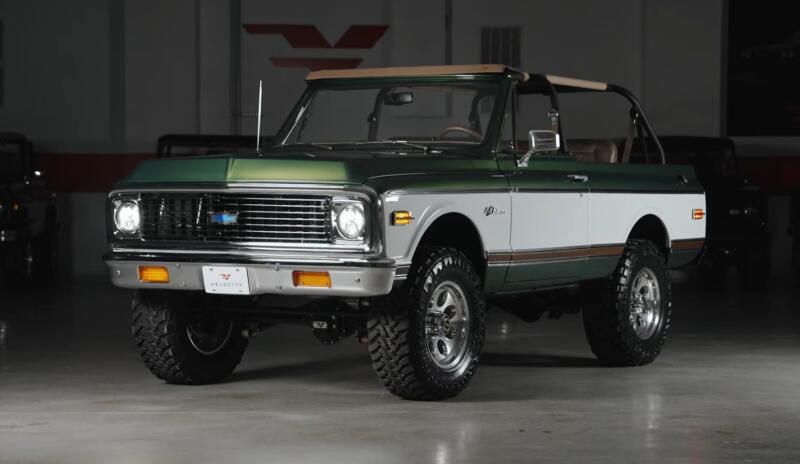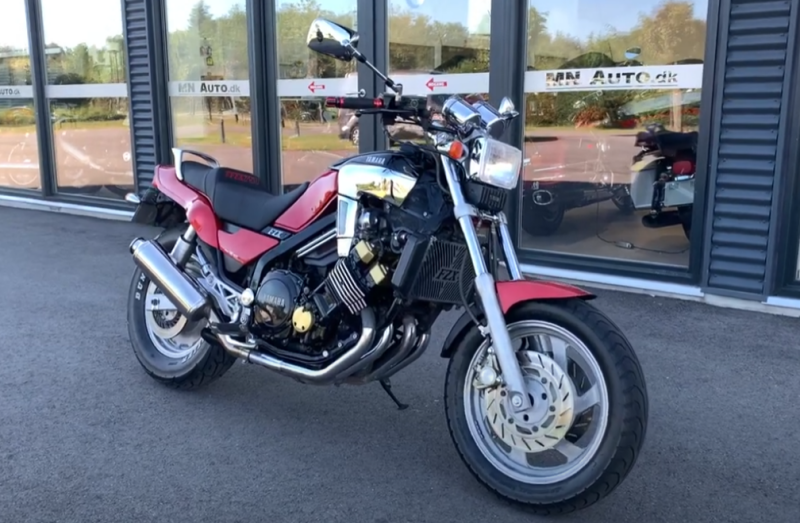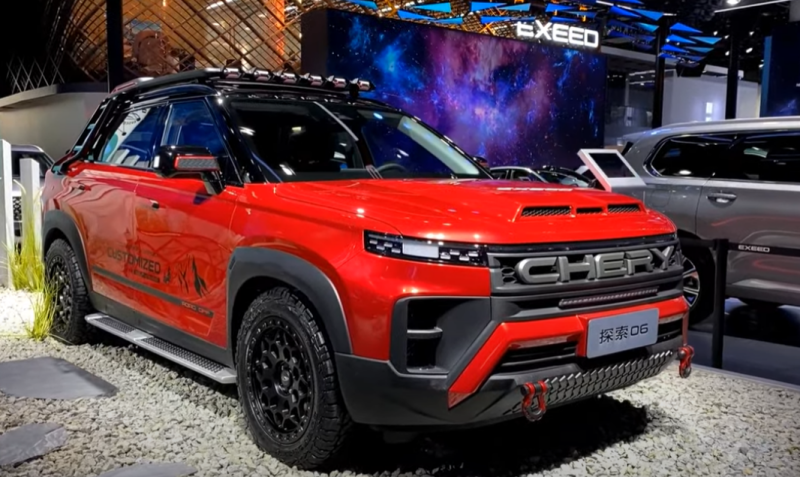But did you know that it was the Volga Automobile Plant that essentially destroyed Moskvich as a brand? The most talented designers worked at AZLK, and if they had not been cut funding, then it was their cars that would have become people's favorites.
It is enough to look at prototypes of Muscovites of different years of production to understand the potential of the plant. And the export figures in the period from 1965 to 1970 speak for themselves - more than half of the released models went to Europe!
 Sedan Moskvich 410. Photo: Youtube.com
Sedan Moskvich 410. Photo: Youtube.comBut today we will remember about the unknown all-wheel drive Muscovites, which could become full-fledged competitors to the VAZ-2121 Niva.
Serial Moskvich 410/411
Long before the start of production of the VAZ-2121 Niva, which is considered the first crossover in the world, all-wheel drive Muscovites existed in the Soviet Union. Despite the small circulation, they were serial - these are 410 and 411 models.
The prerequisites for the appearance of such cars are banal - in the country in the mid-1950s, virgin lands were actively developed. For effective repair of agricultural machinery, mobile machine operators are needed on machines. Motorcycles could be used, but heavy parts and tools could not be carried on them.
There was an option with the GAZ-69, but these military off-road vehicles were considered too expensive and voracious. But at the Gorky Automobile Plant around that time they were working on the creation of a compact crossover GAZ M73. He did not go into the series, but the idea was picked up and transferred to the Moscow plant MZMA.
Work on the off-road Moskvich began in 1956. In less than 12 months, prototypes were made and the model was launched into series.
The Moskvich 410 was structurally similar to the GAZ M73, but the then mass-produced 402 model was taken as a donor.
Differences from the usual Moskvich 402:
- ? Reinforced body
- ? The presence of a two-stage transfer case of our own design
- ? Off road tires
Thanks to the work with the gearbox, the 410 model sedan received increased traction at low revs, but lost at maximum speed.
The car had a ground clearance of 220 mm and was able to overcome fords up to 50 cm deep.
 Station wagon Moskvich 411. Photo: Youtube.com
Station wagon Moskvich 411. Photo: Youtube.comIn 1958, the car was upgraded, after which it received the letter "H" in the title. At the same time, the manufacturer put another model on the conveyor - the Moskvich 411 station wagon.
The fact that the cars are not real all-terrain vehicles was stated in the instruction manual. It turns out that the first crossover in the world was the Moskvich 410/411.
They just released a few of these cars, especially station wagons. Sedans made 7, and Moskvich 580 - 411 units.
Over the years of operation, cars have proven their reliability, but the designers also noted a number of disadvantages:
- ? The body, despite the reinforcement, was not rigid enough
- ? The transfer box could not withstand the load
- ? Comfort level is low even compared to Moskvich 402
As a result, it was decided to discontinue these versions of cars, and develop new models from scratch.
Moskvich 415/416
An SUV of its own design was released back in 1957. It was a modern car for its age, somewhat similar to the American Willys. Then most of the world's manufacturers looked up to the military legend from the United States.
 Moskvich 415. Photo: Youtube.com
Moskvich 415. Photo: Youtube.comEngineer I. A. Gladilin, under whose leadership the model was developed, tried to use the maximum details from serial Muscovites, despite the difference in appearance.
The main difference between the new SUV and the Moskvich 410/411 was the rejection of the load-bearing body and the use of a spar frame in the design.
Judging by the awning, the car was developed more for the military.
Moskvich 416, which appeared later, received a closed body and a more comfortable interior. This model was intended for machine operators and agricultural workers.
The machines successfully passed factory tests and were preparing for state tests. But the Ministry of the Automotive Industry was not interested in new SUVs and did not finance these projects. It was decided that the Soviet Union did not need low-power analogues of the GAZ-69.
 Moskvich 416. Photo: Youtube.com
Moskvich 416. Photo: Youtube.comMoreover, the Moskvich-410/411 was also discontinued in order to focus on the production of models popular abroad.
Moskvich-2150
The project was shelved until the early 1970s. Only at this time the USSR suddenly needed a small off-road vehicle.
Three Soviet factories at once were given the task of creating prototypes of such models:
- ? AvtoVAZ
- ? IzhMash
- ? AZLK
Each enterprise prepared and presented several experimental models of cars - these are Izh-14, the future Niva and Moskvich-2150.
Who won this competition, everyone knows - the brainchild of AvtoVAZ.
The AZLK plant, using many years of experience and experience with 410/411 and 415/416, in 1973 assembled an experimental model Moskvich-2150.
The new car was supposed to be as unified as possible with existing production cars. Therefore, Moskvich 412/2140 was chosen as the base.
The new model was intended primarily for the village. The car received a derated engine with a reduced compression ratio so that it can run on low-octane gasoline.
They tried to simplify the design as much as possible, since the car was supposed to be used far from service stations. Especially for trouble-free winter operation, Moskvich-2150 was equipped with a pre-heater, and the cooling system had antifreeze by default.
 The spare wheel was placed on the starboard side. Photo: Youtube.com
The spare wheel was placed on the starboard side. Photo: Youtube.comThe base of the car and the track were increased - the car turned out to be more resistant to rollover. To maximize the power reserve, Moskvich-2150 was equipped with two fuel tanks located on the right and left.
On the advice of the military, the car received differentials - increased slip and a lockable rear, which was not in the all-wheel drive Muscovites of previous models. They decided to make the suspension spring with stabilizers.
The transfer case was installed with a power take-off shaft - it was planned to equip the Moskvich-2150 with a winch and other additional equipment.
The new car was made frame - such a step was taken, given the problems with the rigidity of the body of the 410/411 models.
Salon Spartan and designed for the carriage of goods. Two separate seats for the driver and passenger were installed in front, and two folding benches along the sides were limited to the rear.
A full-fledged spare wheel was decided to be placed outside on the right.
Moskvich-2150 passed a series of tests, after which it was demonstrated to the military, who highly appreciated the car's cross-country ability.
Initially, the go-ahead was given to the production of the model in Kineshma, where the AZLK branch was located. According to forecasts, it was planned to produce about 60 SUVs per year.
 Experienced Niva 1973 release. Photo: Youtube.com
Experienced Niva 1973 release. Photo: Youtube.comBut in the end, preference was nevertheless given to a prototype from AvtoVAZ - it became the very legendary VAZ-2121 Niva, which is still being produced.
A prototype Moskvich-2150 has survived to this day in one of the Moscow museums.
All-wheel drive Muscovites are a glorious history of our automotive industry. The machines had every chance of success, but the lack of funding put an end to these models.
